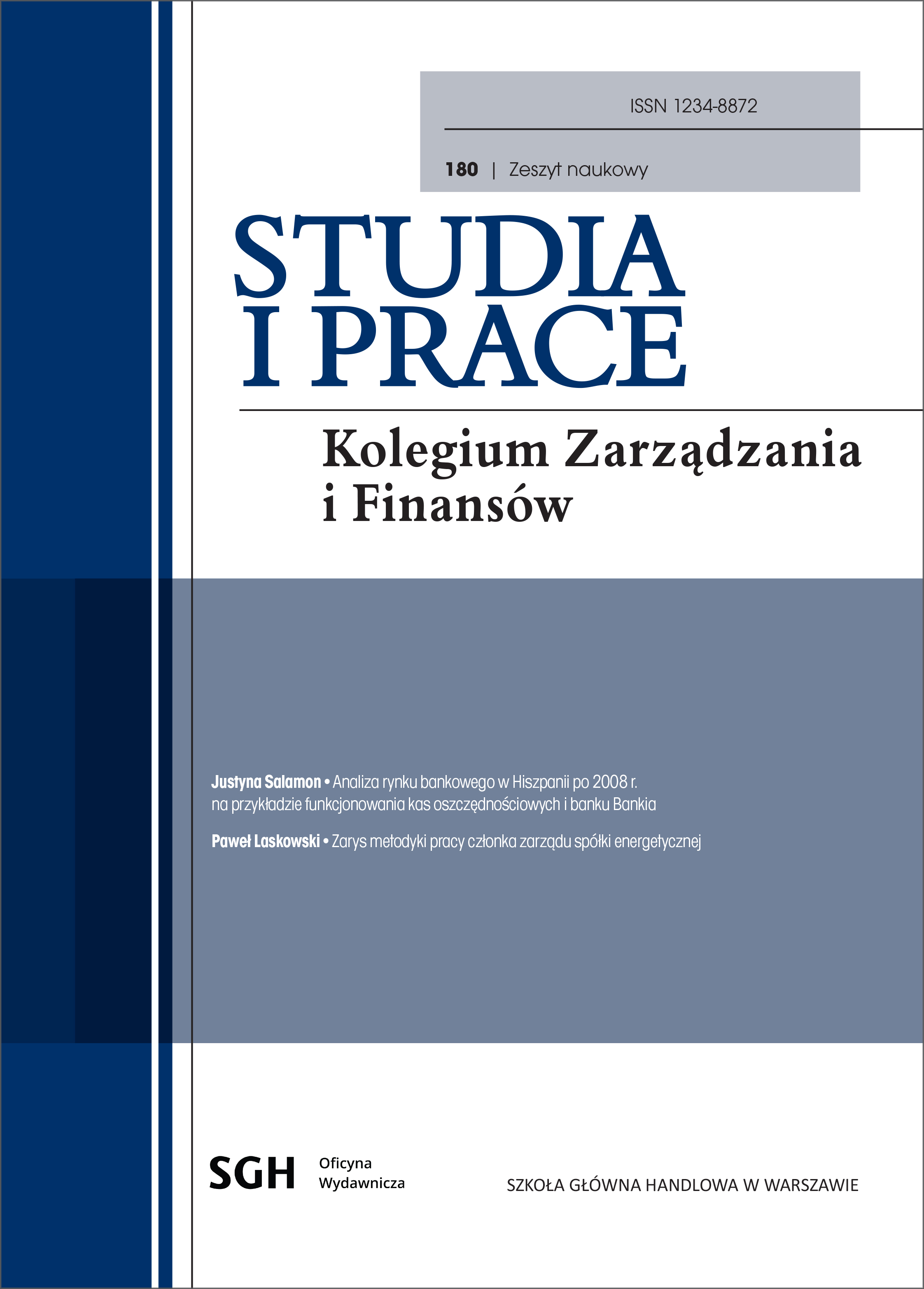The Attractiveness of Investing in Whisky Market
DOI:
https://doi.org/10.33119/SIP.2020.179.1Keywords:
financial market, alternative investment, investment whisky marketAbstract
Alternative investment gains in importance especially when financial markets experience high levels of volatility and turmoil. In addition, because of low correlation coefficient between rates of return for alternative investments and rates of return on the stock or bond market, alternative investments can be added to investment portfolios to boost their effectiveness. Investment whisky market is slowly emerg- ing as one of popular alternative investment segments, together with real estate, works of art, diamonds, and investment wine. The comparison of rates of return in this segment with other financial market segments is difficult due to lower liquidity of the whisky market than that of the stock or bond markets. The above explains why we decided to apply three whisky market indices: Vintage 50, ICON 100, and Japanese ICON 100 on a monthly basis. The results obtained are among the first ones ever available in the Polish market. In many instances they confirmed the results of other surveys conducted in the global market with regard to investment wine but in some aspects they contradicted them.
Downloads
References
1. Adamska A. [2016], Alkohole jako przedmiot inwestycji alternatywnych, „Finanse, Rynki Finan¬sowe, Ubezpieczenia”, 4, 82, s. 571-579.
2. Anderson R. [1974], Paintings as an Investment, „Economic Inquiry”, 12, 1, s. 13-26.
3. Ashenfelter O., Ashmore D., Lalonde R. [1993], Wine Vintage Quality and the Weather: Bor- deaux, artykuł z konferencji Second International Society, Verona, Italy, 18-19.02.
4. Ashenfelter O., Storchmann K. [2006], Using a Hedonic Model of Solar Radiation to Assess the Economic Effect of Climate Change: The Case of Mosel Valley Vineyards, NBER Working Paper, no. 12380 (July).
5. Baumol W. [1986], Unnatural Value: Or Art Investment as Floating Grape Game, „American Economic Review”, 76, 2, s. 10-15.
6. Bentzen J., Leth-S0rensen S., Smith V. [2002], Prices of French ICON Wines and the Business Cycle: Empirical Evidence from Danish Wine Auctions, CIES Discussion Paper 0224.
7. Burton B., Jacobsen J. [1998], The Rate of Return on Investment in Wine, 1986-1996, Mimeo Wesleyan University, Middletown.
8. Burton B., Jacobsen J. [1999], Measuring Returns on Investments in Collectibles, „Journal of Economic Perspectives”, 13, s. 193-212.
9. Burton B., Jacobsen J. [2001], The Rate of Return on Investment in Wine, „Economic Inquiry”, 39, s. 337-350.
10. Byron R., Ashenfelter O. [1995], Predicting the Quality of an Unborn Grange, „Economic Record”, 71, 212, s. 40-53.
11. Cardell S., Kling J., Petry G. [1995], Stamp Returns and Economic Factors, „Southern Econo- mic Journal”, 62, 2, s. 411-427.
12. Combris P., Lecocq S., Visser M. [1997], Estimation of a Hedonic Price Equation for Bordeaux Wine: Does Quality Matter?, „Economic Journal”, 107, s. 390-402.
13. Di Vittorio A., Ginsburgh V. [1996], Pricing Red Wines of Medoc Vintages from 1949 to 1989 at Christies Auctions, „Journal de la Societe Statistique de Paris”, 137, s. 19-49.
14. Fase M. [1996], Purchase of Art: Consumption and Investment, „Economist”, 144, 4, s. 649-659.
15. Fogarty J. [2006], The Return to Australian Fine Wine, „European Review of Agricultural Economics”, 33, s. 542-561.
16. Frey B., Pommerehne W. [1989], Art Investment: An Empirical Inquiry, „Southern Economic Journal”, 56, 2, s. 396-409.
17. Goetzman W. [1995], The Information Efficiency of the Art Market, „Managerial Finance”, 21, 6, s. 25-34.
18. Goetzmann W. [1996], How Costly is the Fall from Fashion, Survivorship Bias in the Painting Market, Economics of Arts - Selected Essays, red. V. Ginsburgh, P. Menger, Elsevier, Amster¬dam, s. 71-84.
19. Haeger J., Storchmann K. [2006], Prices of American Pinot Noir Wines: Climate, Craftsman- ship, Critics, „Agricultural Economics”, 35, s. 67-78.
20. Ibbotson R., Brinson G. [1987], Investment Markets; Gaining the Performance Advantage, McGraw Hill, New York.
21. Jaeger E. [1981], To Save or Savor: The Rate of Return to Storing Wine, „Journal of Political Economy”, 89, 3, s. 584-592.
22. Jones G., Storchmann K. [2001], Wine Market Prices and Investment Under Uncertainty: An Econometric Model for Bordeaux Cru Classes, „Agricultural Economics”, 26, s. 114-133.
23. Kane A. [1984], Coins: Anatomy of a Fad Asset, „Journal of Portfolio Management”, 1, 2, s. 44-51.
24. Krasker W. [1979], The Rate of Return to String Wines, „Journal of Political Economy”, 87, 6, s. 1363-1367.
25. Masset P., Henderson C. [2009], Wine as an Alternative Asset Class, Working Paper.
26. Moroz D., Pecchioli B. [1999], Sholud You Invest in an Old Bottle of Whisky or in a Bottle of Old Whisky? A Hedonic Analysis of Vintage Single Malt Scotch Whisky Prices, „Journal of Wine Economics”, 14, 2, s. 145-163.
27. Parker R. [1985], Bordeaux: The Definitive Guide for the Wines Producers since 1961, Simon & Schuster, New York.
28. Pesando J. [1993], Art. As an Investment: The Market for Modern Prints, „American Econo- mic Review”, 83, 5, s. 1075-1089.
29. Sanning L., Shaffer S., Sharratt J. [2008], Bordeaux Wine as a Financial Investment, „Journal of Wine Economics”, 3, s. 61-81.
30. Sokolin W. [1987], Liquid Asset, Macmillan, New York.
31. Willis Towers Watson, World Gold Council.
Strony internetowe
1. https://stooq.pl, dostęp 3.03.2020.
2. https://www.rarewhisky101.com/indices, dostęp 22.03.2020.









